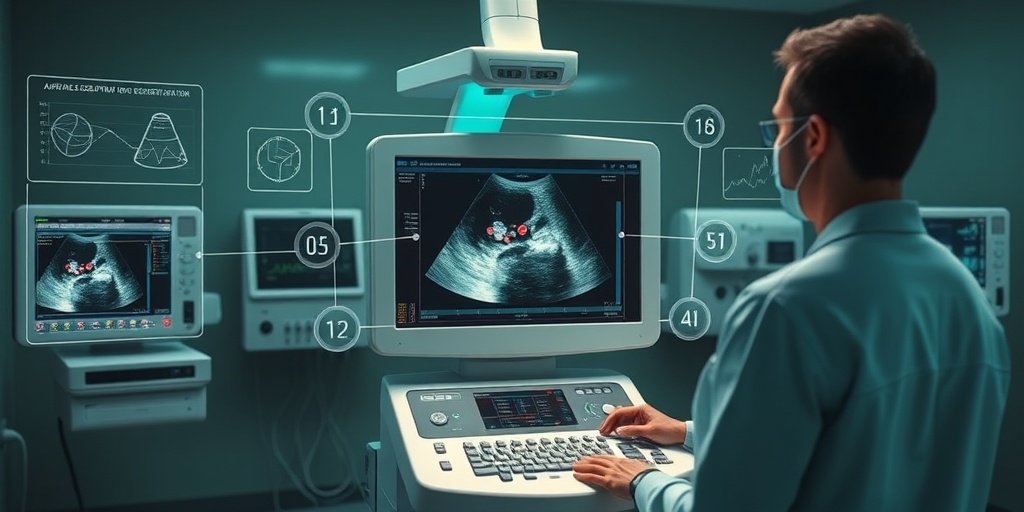⚡ Quick Summary
The study introduces Flip Learning, a novel multi-agent reinforcement learning framework for weakly supervised segmentation of nodules in breast ultrasound. This method significantly enhances segmentation accuracy while streamlining the annotation process, outperforming existing state-of-the-art techniques.
🔍 Key Details
- 📊 Dataset: Large in-house datasets of 2D and 3D breast ultrasound images
- 🧩 Features used: 2D/3D bounding boxes for nodule segmentation
- ⚙️ Technology: Multi-agent reinforcement learning
- 🏆 Performance: Outperforms state-of-the-art weakly supervised segmentation methods
🔑 Key Takeaways
- 🤖 Flip Learning utilizes a unique approach to automate nodule segmentation in breast ultrasound.
- 💡 Weakly supervised segmentation (WSS) reduces the need for extensive manual annotations.
- 🏆 Key contributions include a superpixel/supervoxel-based approach and three designed rewards for precise learning.
- 📈 Progressive curriculum learning enhances agent interaction with the environment, improving learning efficiency.
- 🌟 Achieves comparable performance to fully-supervised learning algorithms.
- 🔬 Validated on large datasets to ensure robustness and reliability.
- 🌍 Potential for broader applications in clinical settings, enhancing user independence in ultrasound analysis.

📚 Background
Accurate segmentation of nodules in breast ultrasound is vital for effective clinical diagnosis and treatment planning. Traditional methods often rely on extensive manual annotations, which can be time-consuming and prone to errors. The advent of weakly supervised learning offers a promising alternative, aiming to simplify the segmentation process while maintaining accuracy.
🗒️ Study
The research conducted by Huang et al. focuses on developing the Flip Learning framework, which leverages multi-agent reinforcement learning to automate the segmentation of nodules in breast ultrasound images. By using only 2D/3D bounding boxes, the framework aims to enhance the segmentation process while minimizing reliance on inaccurate activation maps.
📈 Results
The Flip Learning method demonstrated superior performance compared to existing weakly supervised segmentation methods and foundation models. The innovative use of superpixel/supervoxel encoding and a carefully designed reward system contributed to achieving results comparable to fully-supervised learning algorithms, marking a significant advancement in the field.
🌍 Impact and Implications
The implications of this study are profound, as the Flip Learning framework could revolutionize the way nodules are segmented in breast ultrasound. By enhancing the accuracy and efficiency of segmentation, this technology has the potential to improve clinical workflows, reduce the burden on healthcare professionals, and ultimately lead to better patient outcomes.
🔮 Conclusion
The introduction of Flip Learning represents a significant breakthrough in the realm of weakly supervised segmentation for breast ultrasound. By streamlining the annotation process and achieving high accuracy, this framework paves the way for future advancements in automated medical imaging technologies. Continued research and development in this area could lead to even more innovative solutions in healthcare.
💬 Your comments
What are your thoughts on the potential of Flip Learning in breast ultrasound segmentation? We invite you to share your insights and engage in a discussion! 💬 Feel free to leave your comments below or connect with us on social media:
Flip Learning: Weakly supervised erase to segment nodules in breast ultrasound.
Abstract
Accurate segmentation of nodules in both 2D breast ultrasound (BUS) and 3D automated breast ultrasound (ABUS) is crucial for clinical diagnosis and treatment planning. Therefore, developing an automated system for nodule segmentation can enhance user independence and expedite clinical analysis. Unlike fully-supervised learning, weakly-supervised segmentation (WSS) can streamline the laborious and intricate annotation process. However, current WSS methods face challenges in achieving precise nodule segmentation, as many of them depend on inaccurate activation maps or inefficient pseudo-mask generation algorithms. In this study, we introduce a novel multi-agent reinforcement learning-based WSS framework called Flip Learning, which relies solely on 2D/3D boxes for accurate segmentation. Specifically, multiple agents are employed to erase the target from the box to facilitate classification tag flipping, with the erased region serving as the predicted segmentation mask. The key contributions of this research are as follows: (1) Adoption of a superpixel/supervoxel-based approach to encode the standardized environment, capturing boundary priors and expediting the learning process. (2) Introduction of three meticulously designed rewards, comprising a classification score reward and two intensity distribution rewards, to steer the agents’ erasing process precisely, thereby avoiding both under- and over-segmentation. (3) Implementation of a progressive curriculum learning strategy to enable agents to interact with the environment in a progressively challenging manner, thereby enhancing learning efficiency. Extensively validated on the large in-house BUS and ABUS datasets, our Flip Learning method outperforms state-of-the-art WSS methods and foundation models, and achieves comparable performance as fully-supervised learning algorithms.
Author: [‘Huang Y’, ‘Chang A’, ‘Dou H’, ‘Tao X’, ‘Zhou X’, ‘Cao Y’, ‘Huang R’, ‘Frangi AF’, ‘Bao L’, ‘Yang X’, ‘Ni D’]
Journal: Med Image Anal
Citation: Huang Y, et al. Flip Learning: Weakly supervised erase to segment nodules in breast ultrasound. Flip Learning: Weakly supervised erase to segment nodules in breast ultrasound. 2025; 102:103552. doi: 10.1016/j.media.2025.103552